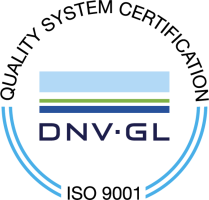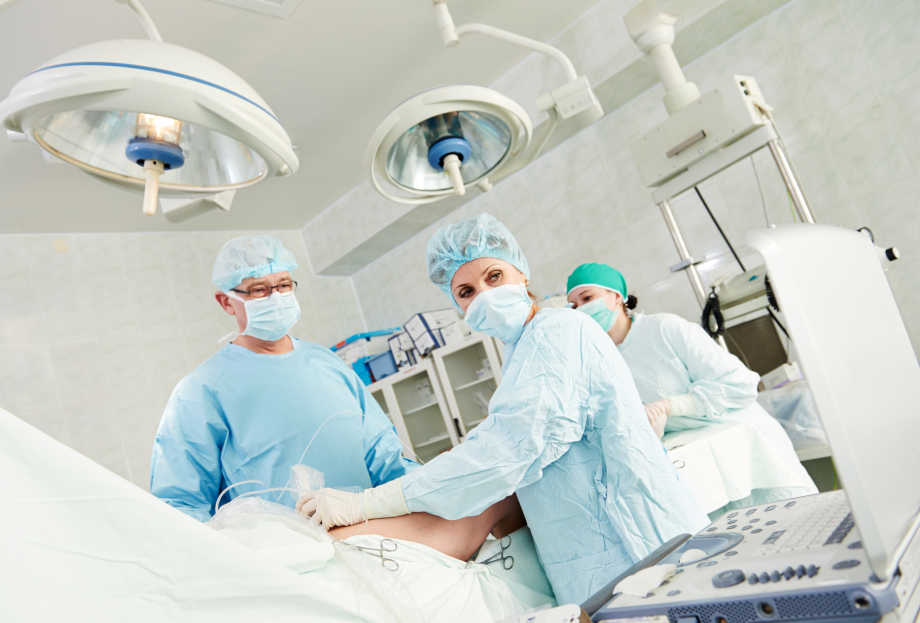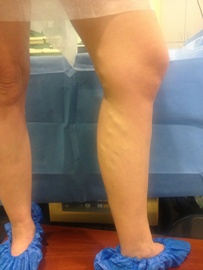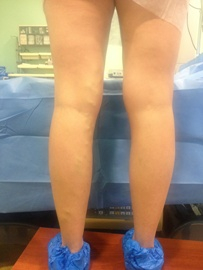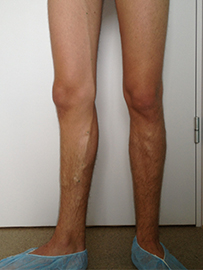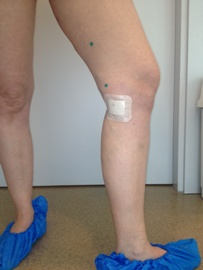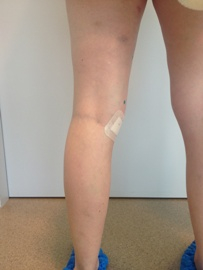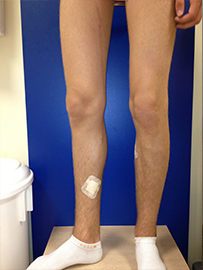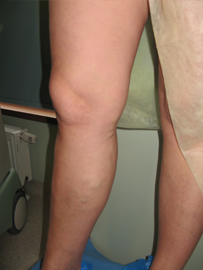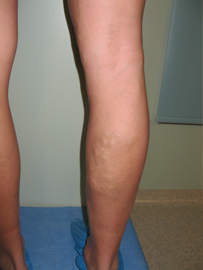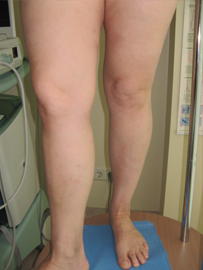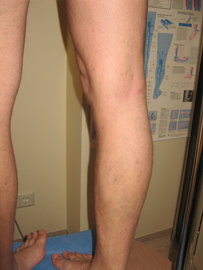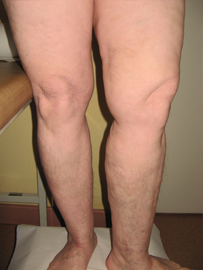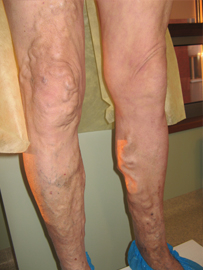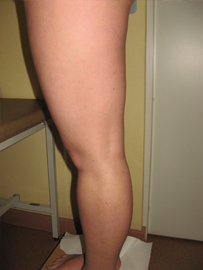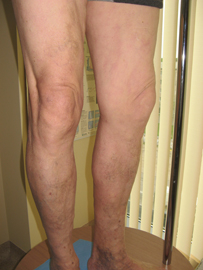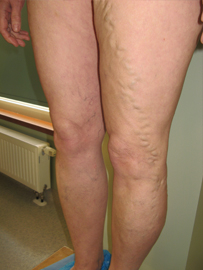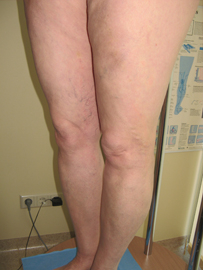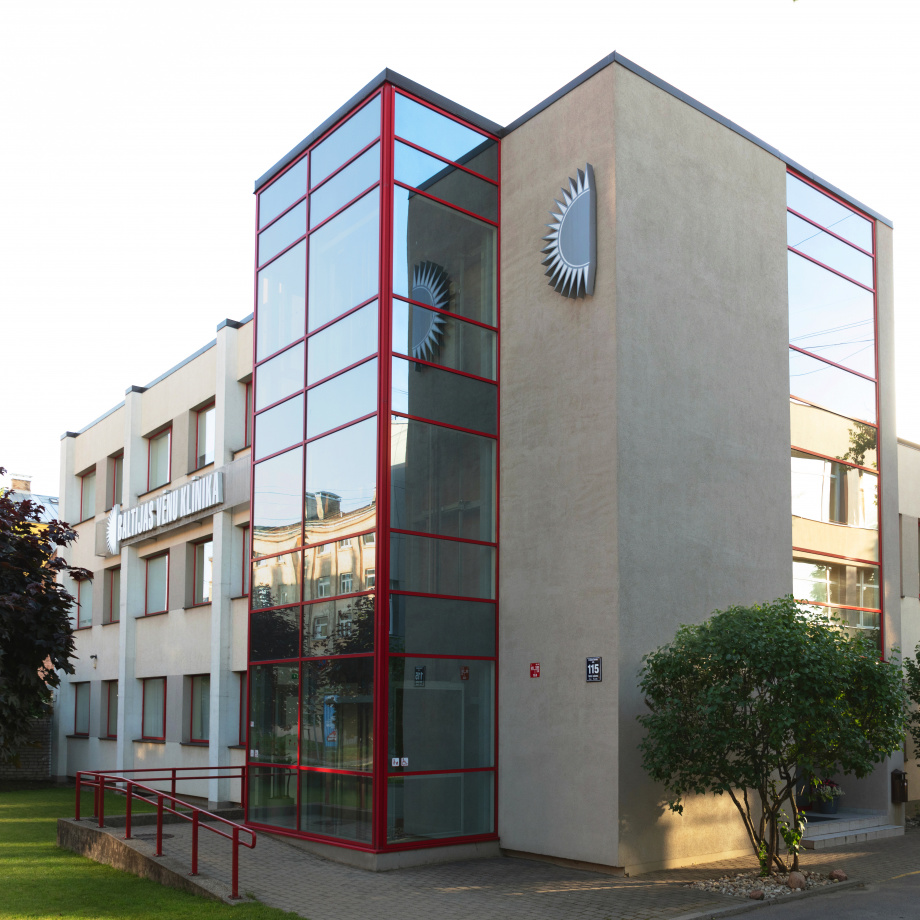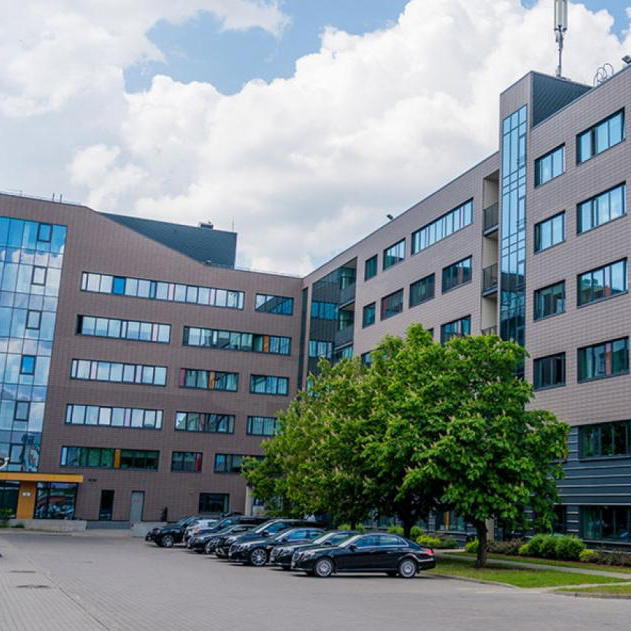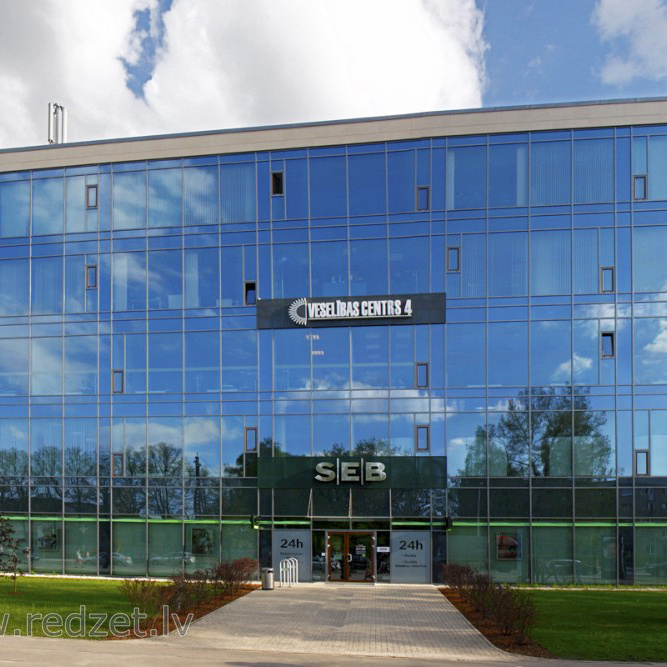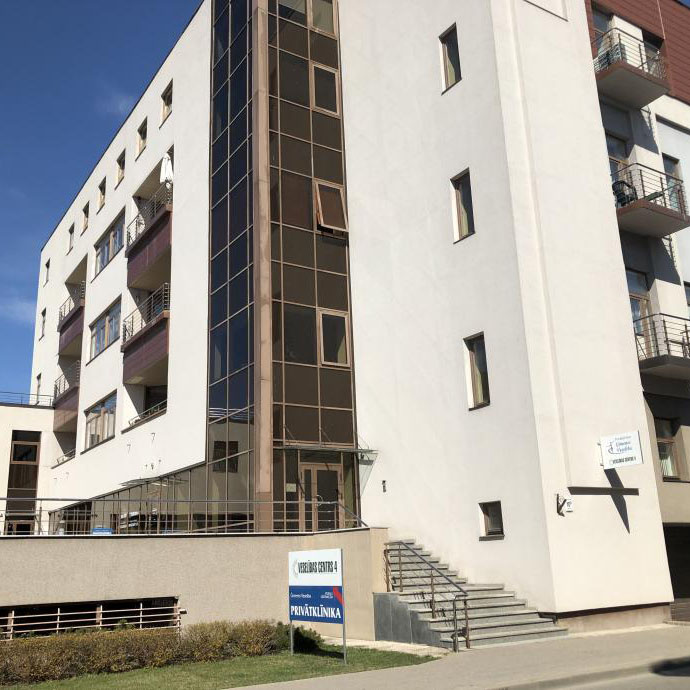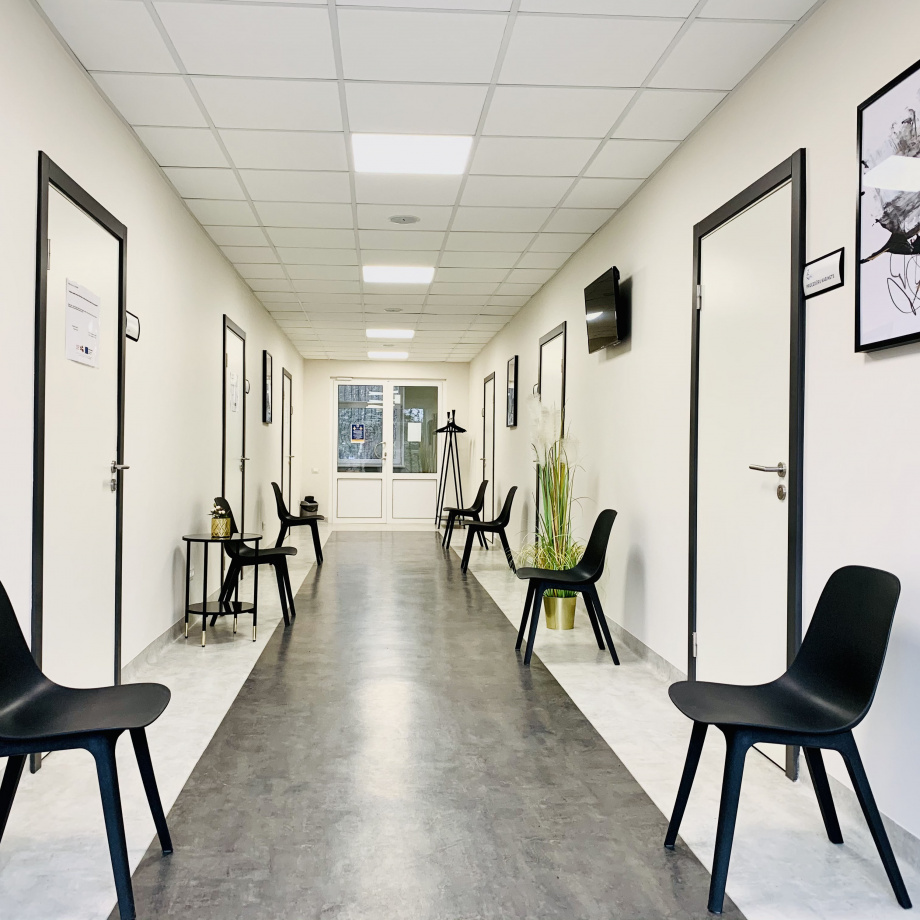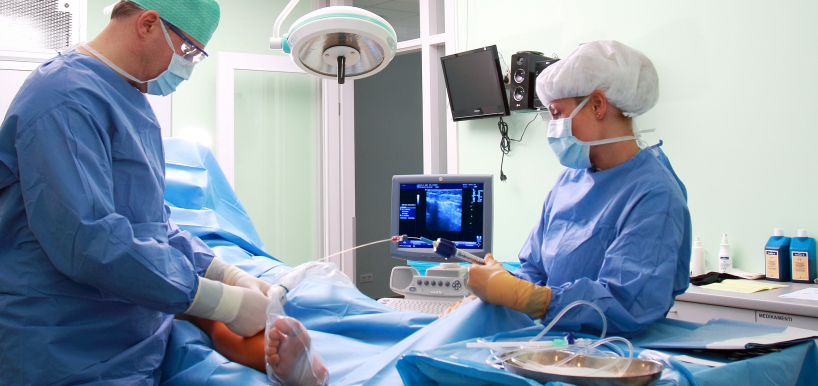
Vein surgeries
Now, vein surgery rarely means tearing out diseased veins through incisions in the skin. Vein ablation has become a standard procedure due to the development of vein surgery – closure using various highly sparing techniques or their combination (radiofrequency, laser, steam microimpulses, bioadhesive).
After the manipulations, the patient can go home immediately and return to usual activities on the same day or the following day. The selection of the right technique is the precondition of successful treatment. The Baltic Vein Clinic provides the entire range of the globally recognised, cutting-edge and effective vein treatment techniques and has become a model of personalised medicine.
Choose the best and the right one for you!
Our specialists choose the type of surgery that best suits the patient. When the treatment plan is developed, doctors consider the patient's health state and secondary factors such as rhythm of life, work specifics, habits, mobility, physical and financial capabilities, etc.
We urge patients to consider the recommendations when choosing the type and place of surgery:
Make sure your surgeon has all treatment techniques at his disposal:
- echotherapy;
- vein closure using the VenaSeal™ Closure System;
- steam microimpulse method;
- radiofrequency surgery;
- laser surgery;
- TOTAL EVLA technique;
- classical vein surgeries.
The surgeon should choose the method that best suits you, not the only method available!
Make sure that the price quote of the clinic includes all costs:
- cost of surgery;
- anaesthesia;
- cost of materials;
- stay in the clinic;
- cost of pre- and post-operative consultations;
- compression stockings (there are surgical techniques that do not require compression stockings).
Some clinics include these costs in one price, in other clinics they turn out to be an unpleasant surprise after surgery.
If you are invited to participate in surgeries that are part of clinical trials, YOU SHOULD KNOW that clinical trials are free of charge in Latvia and in the European Union, i.e., the organiser pays the patient for participating in the trial. The patient should never have to pay for participation in these trials. All legal clinical trials must be registered with the State Agency for Medicines www.zva.gov.lv.
Currently available vein surgery techniques:
VEIN CLOSURE USING BIOADHESIVE
(VENASEAL CLOSURE SYSTEM)
This is the most recent, advanced, and sparing method of endoluminal vein surgery. This method was introduced worldwide in 2012 only, and Latvia is the fifth country in the world where it has been applied.
This method is not a thermal or chemical ablation method, so it can be used for patients who should avoid anaesthetic drugs. The vein is closed from the inside using a special bioadhesive and then it transforms into connective tissue. The procedure is completely painless, and anaesthesia is not required. No haematomas (bruises) or skin sensitivity disorders occur after the procedure.
This method will probably replace all thermal ablation methods in the future.
Its biggest disadvantage is currently the high price. It is comparable to a Rolls-Royce – exclusive but expensive. On average, this surgery is by 1,500.00 EUR more expensive than other methods. It is recommended for patients who want maximum comfort and a visually perfect look the next day after surgery. Wearing vein compression stockings is not required.
Advantages of surgery
- anaesthesia is not required,
- compression stockings are not required after surgery,
- the shortest recovery period,
- no haematomas (bruises),
- immediate visual effect.
Before
After
VEIN RADIOFREQUENCY SURGERIES
(RFO) AND (EVRF)
This is the world's oldest and most researched technique of endovenous vein ablation. The company VNUS originally developed this technique with the aim to use microwaves to heat the walls of a vein, which would contract, resulting in a smaller vein diameter and restoring valve function. This did not work, but this technique turned out to be a sparing way to close a damaged vein and replace classical vein surgery. The method was launched in 1998 and since 1999 it has become the most widely used method in the USA. The first catheters had a brush-shaped electrode on the end. Their cost was high, and surgery took a long time.
Application of the technique in Latvia
In 2007, an all-new Closure FAST catheter was created with a much lower cost and the short surgery time as the laser. It has been used at the Baltic Vein Clinic of VC4 since 2008.
Since 2011, BVC has introduced the EVRF radiofrequency method patented by the Belgian company F Care systems. Unlike the Closure FAST system (VNUS), this method has specially designed catheters of 3 types and a thermocoagulation needle. This enables doctors to apply a single technique to treat all types of varicose veins: main veins, lateral branches, and spider veins.
Advantages of surgery
The method is very accurate, as the device automatically adjusts the power and duration of the energy, providing extra safety and avoiding the use of inappropriate power settings.
The world's oldest and most researched technique of endovenous vein ablation. The method is most widely applied in the USA. Different types of electrodes are available, so veins of different diameters can be treated.
Before
After
Vein surgery by radiofrequency and steam microimpulse techniques
VEIN LASER SURGERIES (EVLT)
Endovenous vein laser surgery is the most common endoluminal vein ablation method in Europe. Laser light is used as a source of energy. Shortwave laser light and an end light guide were used at first, then, as the technology developed, they were replaced by radial light guides and longwave lasers. Their effects were much more selective, and the post-operative period became completely painless.
The Baltic Vein Clinic of VC4 uses 3 types of laser devices (Eufoton laser Lasemar 1500 (1470 nm) diode laser, Biolitec Ceralas (1470 nm) diode laser, Dornier Medtech medilas D (1470 nm) diode laser, Eufoton).
Application of the technique
This method was first introduced in 2001, but in 2002 it was introduced under the guidance of German professor Thomas Proebstle at the Phlebology Centre of VC4, where the first laser vein surgeries in the Baltic States were performed. During these 10 years, the doctors of the clinic have performed more than 10,000 surgeries and gained great experience, operating on patients with the most severe vein pathologies. Therefore, conventional, or classical vein surgeries are practically no longer necessary due to their traumatic nature. It is the most well-known method in Latvia, so it is available in all centres offering endovenous surgery.
Advantages of surgery
The most affordable surgery in terms of price. A method that has been used in Latvia for the longest time. The specialists of the Baltic Vein Clinic have had the most extensive experience with this method since 2002.
Lasers act directly on the water in the blood vessel and close the vein, which is then absorbed into the tissue. It minimises pain symptoms after surgery, and recovery is very fast.
Before
After
Vein surgery by laser method and steam microimpulse techniques
CLASSICAL VEIN SURGERY
The main saphenous vein (VSM) is removed by making a 3-5 cm incision in the groin, through which the vein is removed, and a special metal or plastic probe is inserted up to the knee or ankle. The vein is tied to the probe and pulled out. Then the wound is sutured. The surgery is more precise if the veins are marked under ultrasound guidance. Compared to minimally invasive thermal ablation methods: laser vein surgery, radiofrequency vein surgery and steam microimpulse vein surgery, classic vein surgery is more traumatic and associated with a longer recovery period.
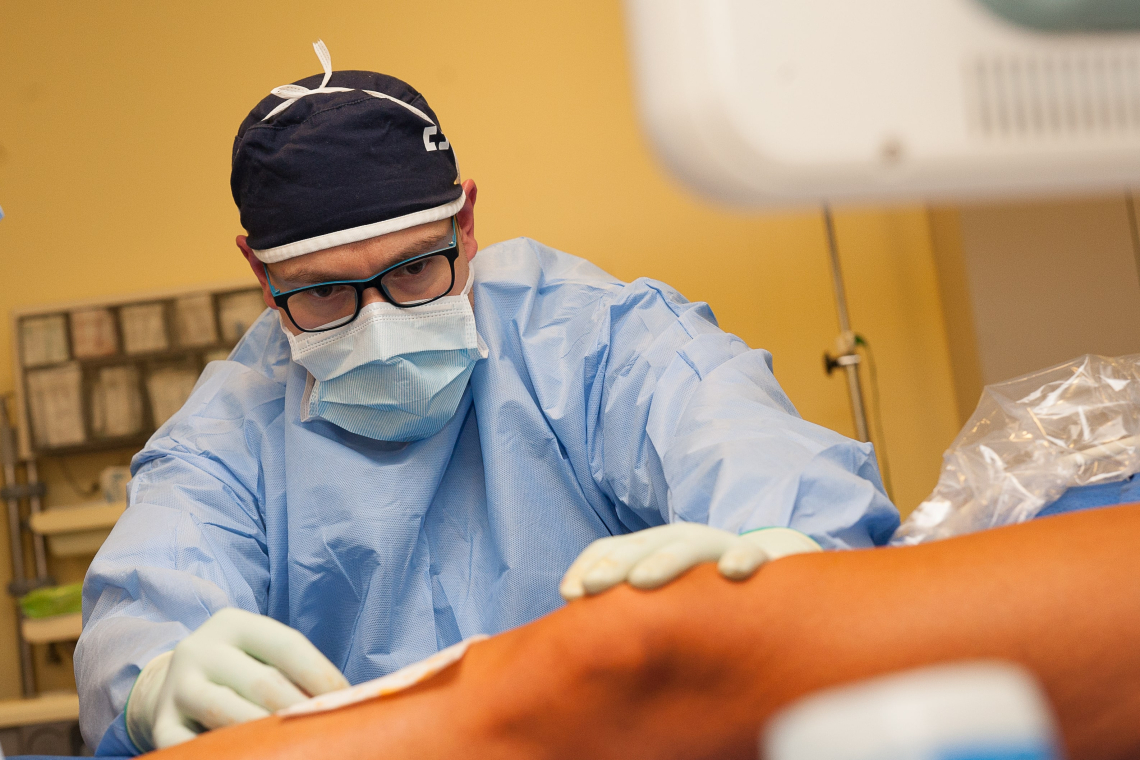
Course of surgery
The surgery is usually performed under local or general anaesthesia. Relapse or recurrent varicose veins is more common after classical vein surgery. This is due to the surgical technique and the quality of the surgery performed, which depends directly on the surgeon’s experience.
Advantages of surgery
It is used in case of severe, advanced varicose veins, where other treatments cannot be applied or are unavailable.
The Baltic Vein Clinic has been practising this type of surgery for a very long time, so the specialists have a very vast experience.
Various techniques can be applied to treat the lateral branches under only local anaesthesia:
- miniphlebectomy is the "golden standard" (Varady technique) or removal of the vein branches through injections of 1-2 mm in the skin using a special mini hook. The punctures in the skin are then closed with leucostripe. After this surgery, the dilated veins disappear, no scars are visible, and there is no skin pigmentation.
- the radiofrequency method (F Care EVRF) is applied with specially designed mini-electrodes that are inserted into the diseased branch of the vein via an injection catheter and "seal" it. The doctor will assess the suitability of the treatment for each patient, as it cannot be used in every case of varicose veins.
- foam sclerotherapy is an invasive method of vein treatment that is not considered surgery. This method enables to effectively close varicose vein branches. The side effects of the method are possible pigmentation of the skin over the closed veins and possible appearance of small capillaries in the sclerotised area. These side effects disappear within a few months.
- small branches of veins can also be closed using the Nd Yag laser, but it is not considered to be the main method of treatment for the leg veins.
- Lateral branches can be closed using the Eufoton LasemaR diode laser (808 nm). This opportunity is currently available in the Baltic Vein Clinic of VC4 only.
- In case of steam technique, after steam penetrates the lateral branches and perforator veins, the need to treat the lateral branches with other techniques is reduced.
